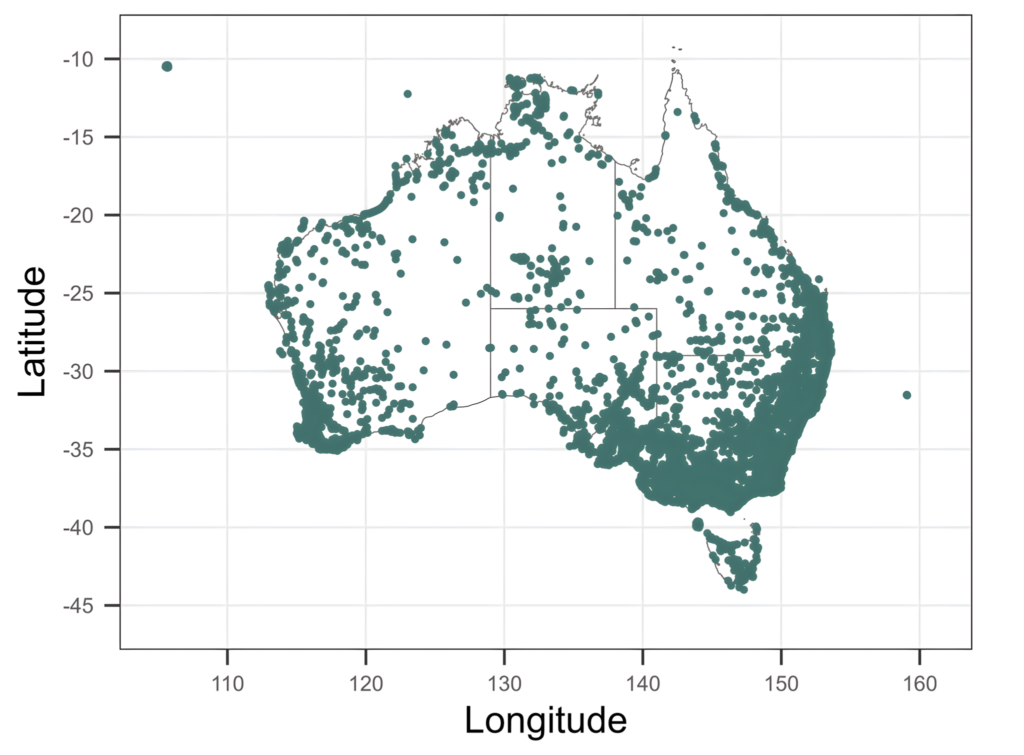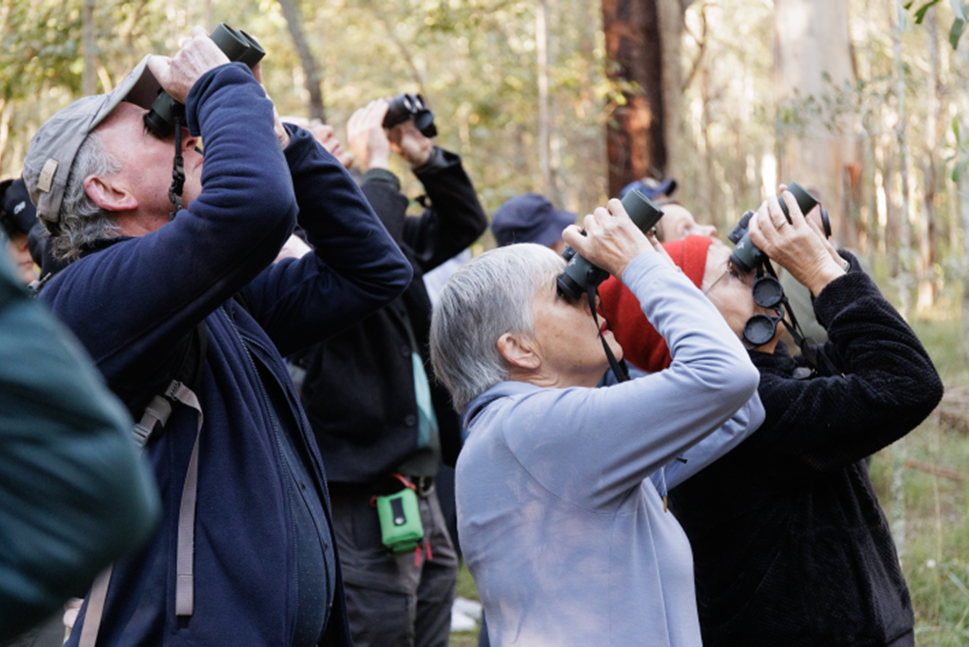The Threatened Species Index (TSX) is a vital data asset for Australia. The 2024 TSX reveals trends in how Australia’s threatened species are faring overall. It shows that threatened species population sizes have shrunk by an average of 73% since 1985. The TSX continues to expand, integrating additional monitoring datasets from across the country each year – for example, in 2024, pilot frog data were added.
Image. Growling Grass Frog, Litoria raniformis (credit: Geoff Heard
Key information about the Australian TSX
TSX contains almost 25,000 data sets collected by hundreds of organisations, scientists and citizen scientists who have been monitoring populations of 335 threatened mammals, birds, plants and frogs across Australia.
TSX is widely recognised as a key metric for tracking and reporting on changes in Australia’s threatened and near-threatened species at national, state, and regional levels.

- A continental-scale database of thousands of threatened species monitoring projects from across Australia.
- A quantitative index, based on the Living Planet Index methodology1, that measures changes in the relative abundance of Australia’s threatened and near-threatened species over time.
- In 2024, along with updates to the existing bird, mammal and plant indexes, a pilot Threatened Frog Index was created and is the first addition of an entirely new index to the TSX since 2020.

National Trends

Figure 1. The Australian Threatened Species Index 2024. The Index shows the estimated average change in the relative abundance of threatened and near threatened birds, mammals, plants and amphibians compared to 1985. A score of 1.2 means a 20% increase compared to the reference year, while a score of 0.8 means a 20% decrease.


Figure 2. A map showing where the monitoring data included in the Australian Threatened Species Index 2024 were recorded.
Figure 3. The number of taxa (in black circles) and number of time series (in green circles) used to calculate the Australian Threatened Species Index 2024 for each year.
Data gaps - did COVID-19 affect data availability?

-
- Short answer – it’s hard to tell… for now.
- Data quality is typically poorer in the years immediately preceding the release date, making it difficult to detect a clear signal (Figure 3).
- Research suggests that, globally, the pandemic caused disruptions in monitoring activities, including restricted fieldwork, reduced funding, and increased costs².
- For the TSX dataset, it may take years for a clear signal to emerge as data collection and reporting processes catch up.
Education and Training

- The TSX has developed a suite of training resources for data providers and users, including an in-depth manual and video guides.
- Data providers are engaged annually through a dedicated “data call” as well as workshops and one-on-one sessions.
- Participation in national and international conferences helps raise awareness and expand the reach of the project.
The role of state and national repositories
-
- Repositories serve as centralised platforms for accessing high-quality monitoring datasets, streamlining their integration into the TSX.
- They provide data in consistent formats, minimising time spent by ecologists on preparation and validation while ensuring compatibility across jurisdictions and species groups.
- Collaboration between the TSX and repositories supports program management and internal reporting needs for state, territory and federal governments.
Harnessing citizen science data
-
- Data from citizen scientists, including those involved in BirdLife Australia programs, represent a significant proportion of the TSX.
- Citizen scientists help raise awareness of threatened species and can help fill critical gaps in the dataset (Figure 2)3.
- The adoption of standardised monitoring protocols by citizen scientists is key to ensuring the consistency and reliability of the data.


Key success factors for the long-term sustainability of the TSX
-
- Growth: The TSX is dedicated to expanding the Index to be as representative as possible, with plans to include reptiles, fish, and invertebrates in the coming years.
- Benefits to sharing data: The TSX provides valuable support to its data providers, offering access to data cleaning, storage, and trend analysis.
- Standardised monitoring: TERN’s standardised monitoring protocols will facilitate the effective collection and integration of data into the TSX database.
- Collaboration: Partnerships with government agencies, research institutions, conservation groups, and citizen scientists will strengthen efforts in biodiversity monitoring and conservation across Australia.
References
-
- Collen B, Loh J, Whitmee S, et al. Monitoring change in vertebrate abundance: the living planet index. Conserv Biol. 2009;23(2):317-327.
- Gibbons DW, Sandbrook C, Sutherland WJ, et al. The relative importance of COVID-19 pandemic impacts on biodiversity conservation globally. Conserv Biol. 2022;36(1):e13781.
- Tulloch AIT, Possingham HP, Joseph LN, et al. Realising the full potential of citizen science monitoring programs. Biol Conserv. 2013;165:128-138.
Story compiled from a poster presented at the 2024 ESA Conference by Tayla Lawrie, Sarah McGrath & Geoff Heard, December 2024







